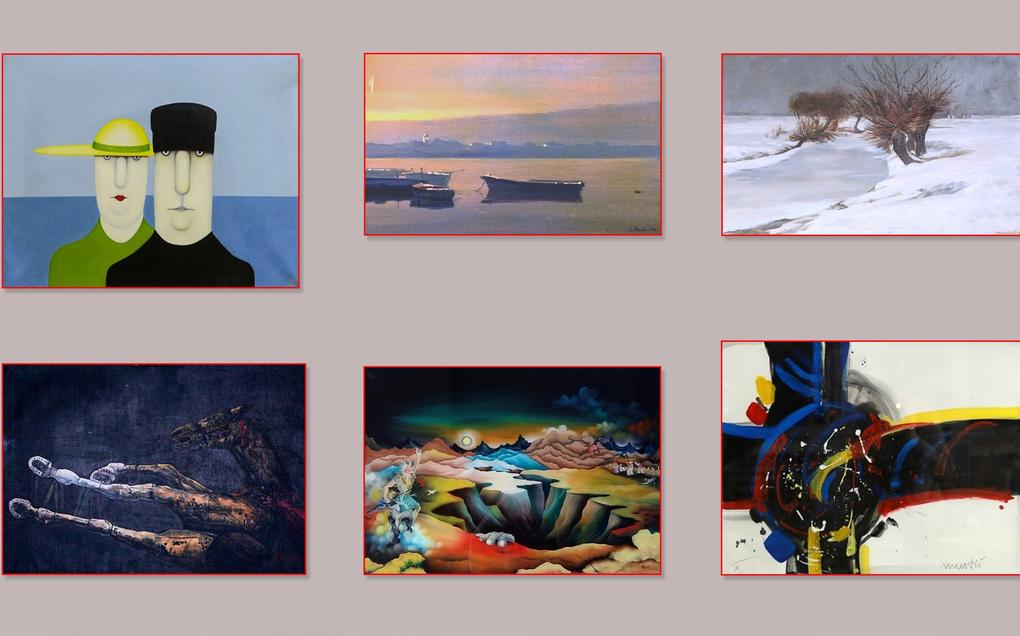Alternative biographies
Lovro Dobričević

Photo gallery
Upon his arrival to Dubrovnik, he became the central painterly figure, not only in the city, but the region at large. He painted all important churches in the city (the Cathedral, the Church of St. Blaise, and churches of the Franciscan and Clarisse orders), and worked for prominent private clients, Bosnian Franciscans, and perhaps even the Bosnian royal family. It should be noted that these were the “golden years” i.e. an epoch that was rightly called “the Golden Age of Dubrovnik.” Several antique dealers and artists (Michelozzo, Juraj Dalmatinac, Pavao Antunov Dubrovčanin) were active in the city, the Republic’s state secretary was the immigrant Greek humanist Senofonte Filelfo, while the humanist Ciriaco Pizzicolli from Ancona, who had spent some time in Dubrovnik earlier, was corresponding with certain patricians and exchanging opinions about the Antiquity. Likewise, between 1448 and 1478, there was a noticeable increase in commissions of altar paintings, which reflected the rising strength of Dubrovnik’s economy.
Dobričević was probably born in 1419, in either Kotor or Prčanj in the Bay of Kotor, as the oldest son in the family. His brother Marko stayed at the family estate in Prčanj and his other brother Leonard became a goldsmith in Kotor. In 1435, as a sixteen-year-old he moved to Venice to study, as a servant of the Kotor governor. It is not known who he studied painting with, but we presume it was with Antonio Vivarini and Michele Giambone. He spent about 13 years in the lagoon city of Venice, which at that time had 200,000 inhabitants and was an important artistic centre. The first mention of him as a painter (Laurentius de Cataro pictor) was found in a document from December 1444, that he and painter Michele Giambone signed as witnesses. When he was approximately twenty-nine years old (1447?) he returned to Kotor. The fact that several years later he was bestowed with a burial place in the Kotor Cathedral is testimony of his reputation, and on one occasion, the Duke of Kotor permanently freed him from the obligation to serve in the city guards “because of his loyalty, diligence and praiseworthy service.” While he lived in Kotor, he worked for clients in the Bay of Kotor and Dubrovnik. This was before he decided to move to Dubrovnik. As previously mentioned, he spent twenty extremely productive years in the city at the foot of Mount Srđ, before he died in 1478. Thanks to him and a circle of his collaborators, the level of quality of painting in the third quarter of the 15th century did not lag behind that of Venice, and it corresponded with the successful contemporary architectural and sculptural works that were being created in Dubrovnik. On the basis of extant archival documents, we know that during his time in Dubrovnik Lovro collaborated with almost all prominent painters from Kotor and Dubrovnik. He had a series of pupils who were thirsty for knowledge; he collaborated with Matko Junčić, Vukac Rajanović and Stjepan Ugrinović, while Lovro’s pupils continued to occasionally collaborate with him even after they became independent, and his work as a painter was carried on by his two sons Marin and Vicko. By helping form young painters, he influenced the creation of the Dubrovnik-Kotor art scene in the second half of the 15th century. He created, with collaboratos, sacral works of different formats; from small paintings to polyptychs with gilded carved frames and coloured sculptures. Regrettably, most disappeared over time or were destroyed, and only a few of his works are extant in Dubrovnik today: polyptych of the Baptism of Christ in the Dominican monastery, an altar triptych in the Church of Our Lady of Danče, the figure of St. Blaise from one disassembled polyptych that is kept in the Rector’s Palace, and a miniature in the Antunini confraternity register in the State Archive in Dubrovnik.








